I like to make garment bags for my clients, and to keep my own dresses in. It makes garments easy to store and carry, and you can build pockets into the garment bags to hold belts and sashes and other accessories, so that you never spend time trying to remember where you put the rest of the outfit.
Here is how to make a simple 22″ wide, 55″ long dress bag with one outside pocket.
You will need:
- 65″ (1.7 yards, 1.5 metres) of 45″ wide fabric. I like to use pre-washed unbleached cotton muslin because it is low-acid. For a shorter bag you will need the length you want the bag to be + 10″ for the pocket.
- A 50″ zip
- A 3″ length of cord, or make your own piece of rouleau cording using Steph’s excellent tutorial.
Step 1: The pocket
- Cut 10″ off of the bottom your length of fabric.
- Cut two 12″ pieces from the 10″ strip. These 10″ x 12″ squares will be your pocket.
- Place the two 10″ x 12″ squares wrong sides together. With a 5/8″ seam allowance start sewing on one long edge 3″ from a corner. When you get to the corner turn and sew down the short edge with a 3/8″ seam allowance. Turn and sew down the 2nd long edge, also with a 3/8″ seam allowance. Sew the final short edge with a 3/8″ seam allowance, but when you get to the last corner turn and sew another 3″ on to the first (original) long edge with a 5/8″ seam allowance. When you are done it should look like this:
- Snip the corners
- Turn and press the square, using the gap in the top edge to turn through.
- Mark the centre of the square at the top edge which has the gap. Fold your cord or rouleau cord into a loop, and pin between the two layers of fabric at the gap. Stitch right along the edge of the fabric at the top edge of the pocket, backstitching over the loop a couple of times to ensure that it is secure.
- Mark the centre of your length of 45″ fabric, and the centre of your pocket (remember this will pass through the centre of the loop)
- Measure down 10″ from the top of your length of fabric, and pin the pocket square in place, matching the centre markings.
- Narrow sew along the sides and bottom of the pocket, being sure to backstitch at the beginning and end so that the pocket is firmly attached.
- Pick a cute button that fits the size of your loop, and sew it on and your pocket is done!
- Fold your length of fabric in half with right sides together. Pin along the two selvedge edges. Sew along the edge using a 5/8″ seam allowance and the largest stitch length. Press this seam open. This seam will be your centre zip opening.
- Insert your zipper: lay your zipper face down on the pressed open seam, carefully centering the zip on the seam. Pin or baste in place.
- Using a zipper foot and the normal stitch length, carefully sew down one edge of the zip, following the ribbed line that is in most zips to guide you.
- When you get to the bottom of the zipper insert your needle fully into the fabric, lift your foot and turn the fabric 90 degrees, so that you can sew across the bottom of the zipper. On garment bags I like to backstitch back and forth across the bottom of the zip a number of times so that it is very firmly secured.
- With the bottom of the zip secured insert your needle into the fabric, lift your foot, and turn the bag another 90 degrees, so that you can sew back up the other side of the zip seam 1/2 from the seam.
- If you have trouble getting past the zipper pull you can insert your needle firmly into the fabric, lift your food, and unpick a bit of the seam to open a hole enough for you to slide the zipper pull down past your foot.
- At the top of the zip turn the fabric once more and sew back and forth across the top of the zip, just as you did at the bottom, so that it is firmly secured.
- Woohoo! Your zipper is all sewn, and almost done. Now you unpick the basted seam covering the front of your zip, and trim off any extra length at the bottom of your zip if you bought one longer than your bag.
Step 4: The bottom of the garment bag
- With your zip done it’s time to finish the bottom of the bag. I do this with a french seam, so that there are no nasty raw edges.
- First, lay the bag out, right side out, centreing the zip in the middle of the bag. Pin the bottom edges together.
- Sew along the bottom edge, 3/8 from the edge.
Turn your bag inside out, press the bottom edge, and sew along the bottom edge 5/8″ from the edge, thus enclosing the raw edges in your seam.
Step 5: the top of the garment bag
The top of your garment bag is going to look like a shallow upside down V, with the tip cut off for the hanger hook to go through. Just as with the bottom of the bag, I french seam it, so that there are no nasty frayed pits.
So, do do the top of your bag:
- Lay the bag out flat, and carefully smooth it out and centre the zip. Lay a hanger on top of it to use as a guide, with the hook right at the centre point along the zip line.
- Mark the line of the hanger on ONE side of the bag using a chalk or a pencil. Use a straight edge to continue this line to the edge of the garment bag.
- Cut 5/8″ above the line you have marked on one side of the garment bag, and then fold the bag in half and use the cut line as a guide to cut the other side of the garment bag.
- Trim off a bit of the top of the garment bag so that you have at least 2″ of a straight edge at the top of your inverted V.
- Then fold, press and stitch the straight edges on the front and back of the garment bag.
- Now that the centre hole that the clothes hanger hook will pass through is finished, it’s time to do the french seam on the top edge. With the wrong sides of the bag together, the zip facing out and centred on the garment bag, sew a narrow 1/4″ seam along the edge on both sides of the finished edges for the hook hole.
- UNZIP the zip and turn the garment bag inside out. Press the seam you have just sewn, and sew 1/2″ from the edge, forming a lovely finished french seam.
- Turn your garment bag right side out, press, and….
You’re done! Put your prettiest garment in it and enjoy!

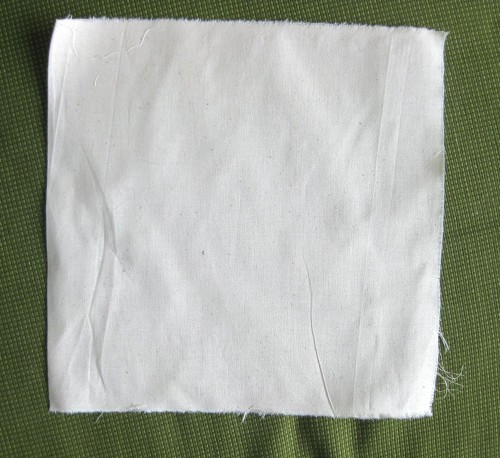
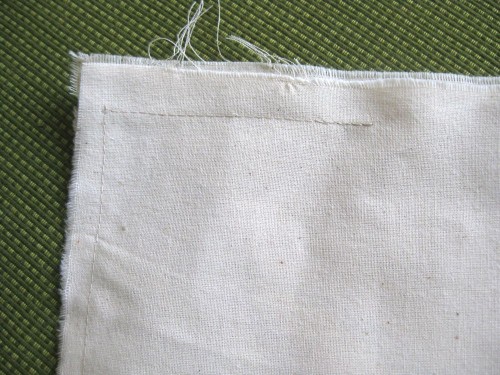
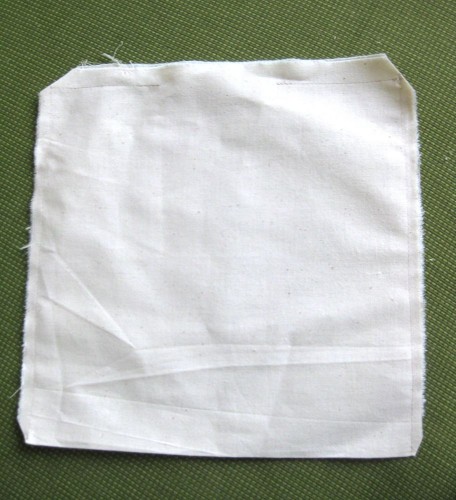
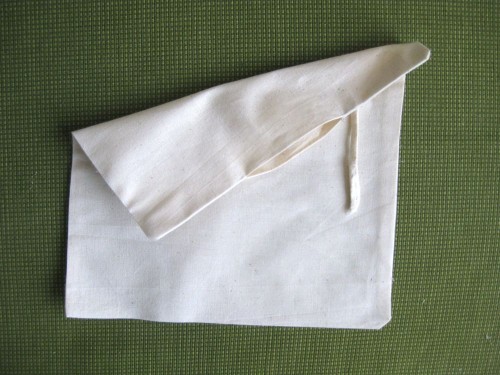



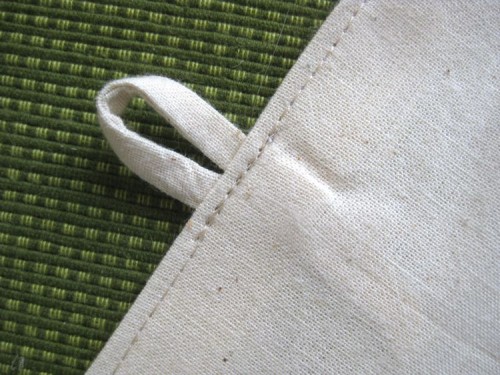
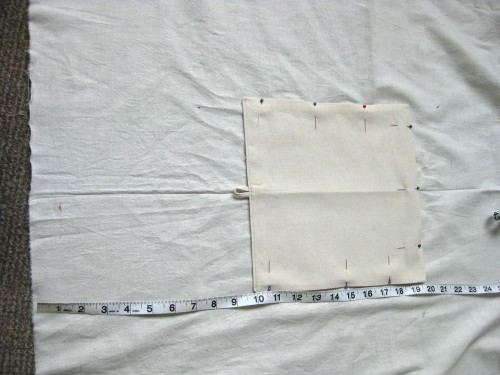
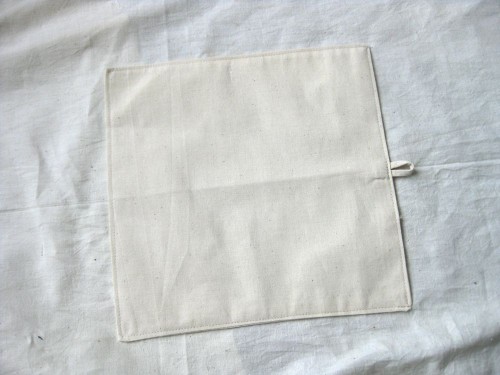
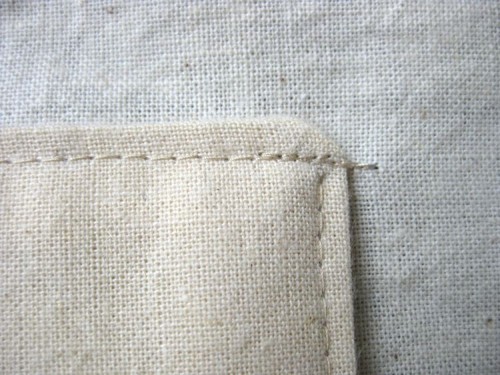


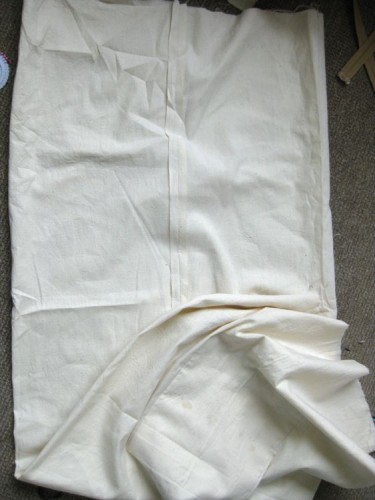

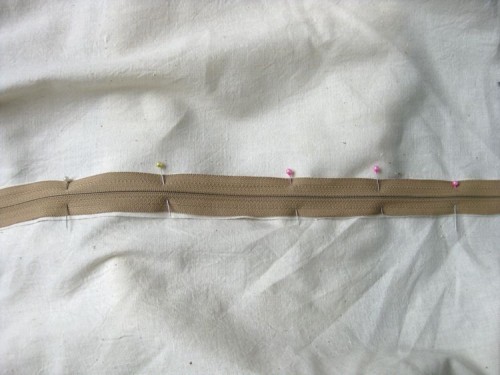

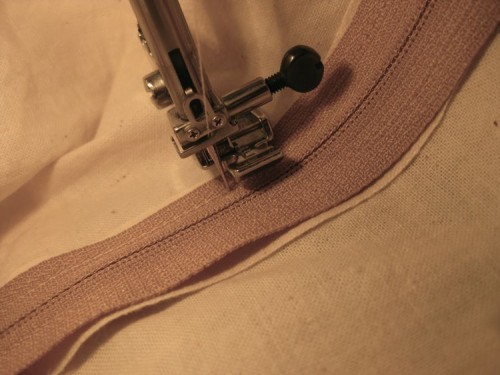

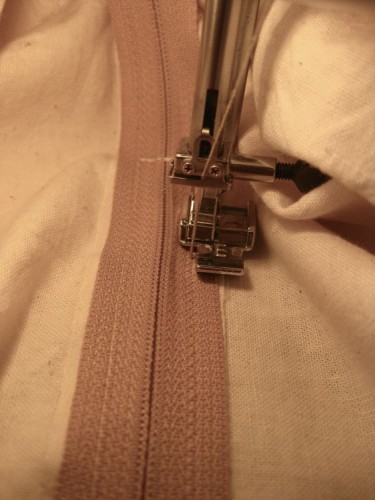


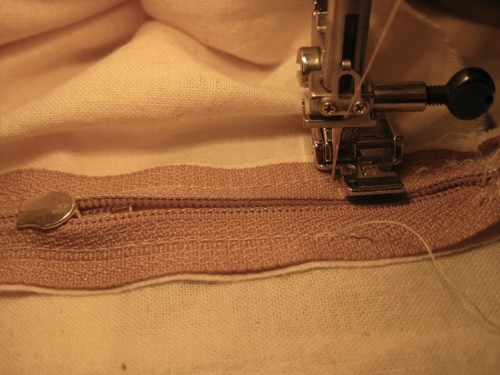
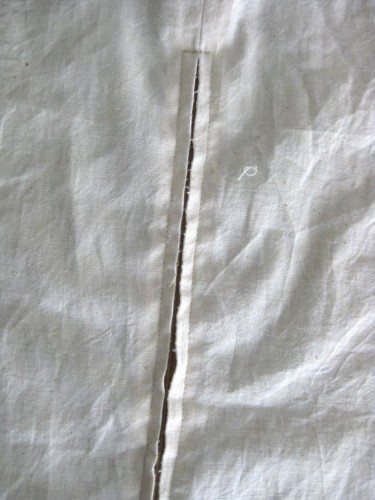



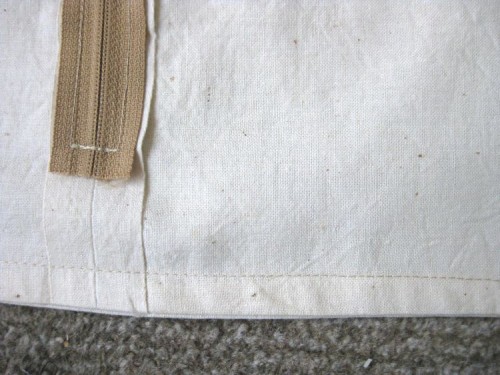
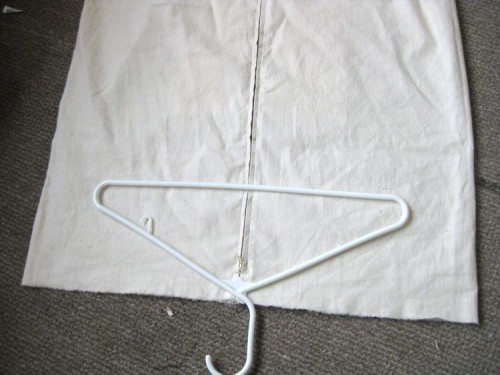
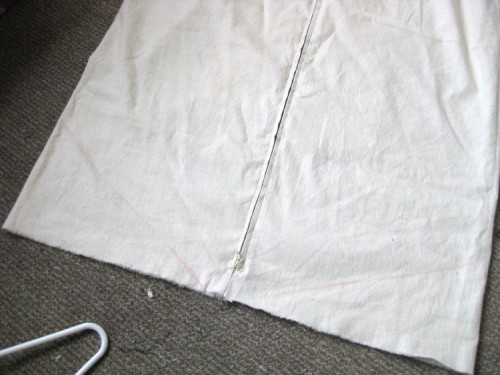
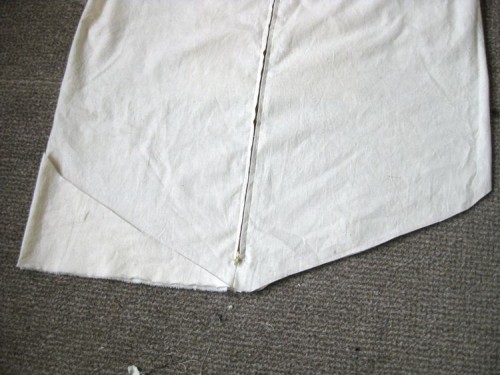


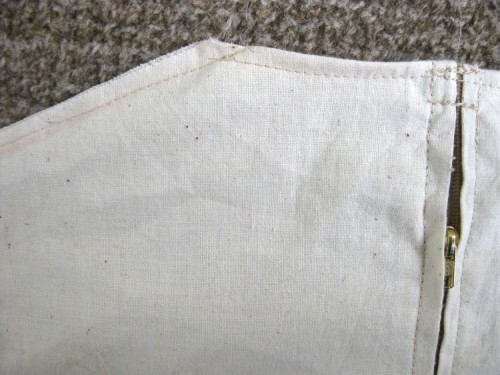
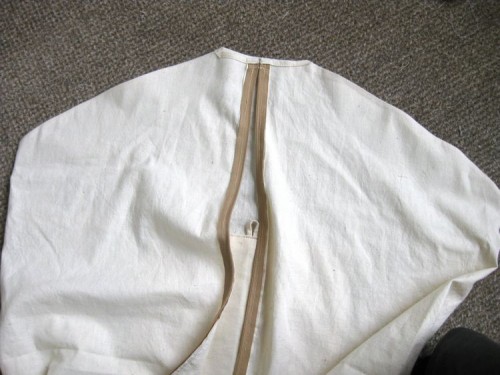

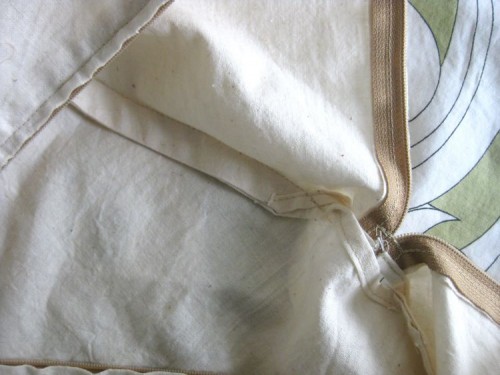
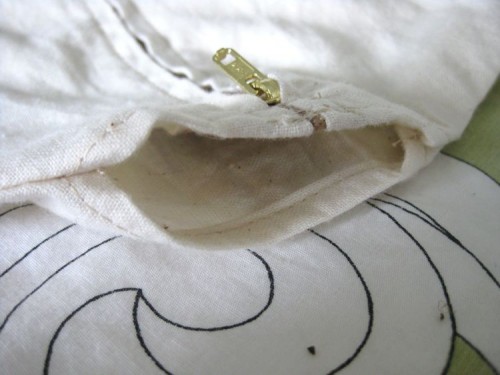
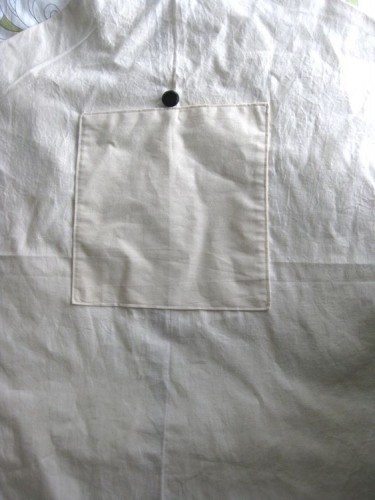
Thanks so much for posting this! I need some garment bags to protect my costumes — didn’t occur to me to just sew my own! I’ll have to try this sometime when I finally get a chance 😀
Thank you! They are actually really quick to sew up – it takes me less than an hour (as long as I’m not photographing every step and taking notes for a tutorial!)
Wow, that’s not something I’d thought of sewing, but why not. Thanks for the inspiration!
You’re welcome. I hope they go well for you if you make some up – let me know if there are any flaws in the tutorial.
Oh wow! This is absolutely awesome!I would never have thought of sewing my own. Thanks so much 😀
Anytime! I’d love to see yours if you make some up!
Thank you so much! I’ve been searching for weeks for a way to store the dresses I’ve been sewing. This is awesome!
Em
You’re welcome! Please post about it if you make your own!
I most definitely will! I’ll link to this post when I do!
Em
So simple, thank you. I’m gonna make some for a certain set of costumes! 🙂
Brilliant! I have thought of doing this – just never managed to do it.
What a wonderful tutorial! I’ve been wishing I had garment bags to store some of my formal dresses in (I have several – they are useful in the life of a singer!) Now I can make them to fit the gowns! Thanks 🙂
Very good! You know, when I wrote this tutorial I wondered how many people would find it remotely useful, so it’s so good to hear that this is helpful.
Definitely useful, great tutorial Leimomi. I love your attention to detail.
great tutorial, thank you…nicely shot, too. the only thing i would do differently is make the zip close downwards – pulling away from the hand holding the coathanger. i find it easier to do up.
Hmmm…good suggestion. I naturally do a lot of things ‘upside down’ compared to most people: writing, handstitching etc.
Thanks for the wonderful tutorial, Leimomi! Do you find this is long enough for full-length dresses you make for clients/yourself, or do you use this size for mostly shorter things?
(Obviously, it’s simple to extend, but I’m curious all the same–the one I made is too short for the gown I intended to use it for [but can definitely be used for something else 🙂 ].)
I use this size for shorter things, or I fold longer dresses over the bar of the hanger. You can figure out the length needed by putting the garment on the hanger and measuring from the top of the hanger triangle to the hem of the garment.
Hi! I linked to your tutorial from a review on patternreview. Please let me know if this isn’t OK and I will remove it.
Thank you so much for this tutorial, I followed it and got a very nicely finished, very practical garment bag!
http://sewing.patternreview.com/cgi-bin/readreview.pl?readreview=1&reviewnum=74602
I’m tickled pink that you linked to your review, and so glad to see that your garment bag came out well. Thank you!
Thanks! Like I said, the garment bag came out really well, and your instructions were VERY clear!!
Thank you so much for this tutorial! My husband asked me to sew up some garment bags to protect his suits in the closet. Most commercial garment bags are too narrow for men’s suits and the ones that have come from the store where he bought them have since ripped (they were cheap plastic). This tutorial is just the thing I needed to get started.
Glad to help! I hope your garment bags turn out well.
Good tutorial. I was looking for ideas to make a garmet bag for the wedding dress I just finished. Obviously I’ll make it longer.
This is lovely. I had an idea ‘in mind’ but your tutorial makes it very clear for me. I need to sew one for my mother-of-the bride dress I just finished in silk charmeuse. I was afraid plastic might snag the fabric during our 2-day drive, and plastic garment bags do not let the clothing breathe and really aren’t recommended for routine storage. I love the idea of the muslin, too.
I know I will be making several of these in the future!
Dreamstress:
I was wondering if it was possible to make a garment bag using Velcro instead of a zipper as the fastener? If so, would you display a tutorial with the instructions. Thanks.
This will be great for our daughter’s recitals. They always say to have your costumes in a bag that no one can see through. I was gonna buy one, but now I can make one that she would really like. (She’s only 4) So I see a little ballerina one in the near future!! 🙂
…thatAwwww…that will be darling!
Thank you!
I am going to make one of these this weekend! Simple is always great.
I think your instructions are easy to understand and I love that I can do this in an hour or two. My closet is going to be very organized now!
I am new to sewing and think I understand this. This is one piece of fabric right? Not a front and back piece sewn together? I know I sound a little silly but i just wanted to make sure I understood. Thanks so much for these instructions. 🙂
Yes, it’s a single piece of fabric folded into a tube, with the one seam as the centre back seam, and no side seams. The bias binding covers the raw edges at the shoulders.
I agree with Connie. It appears to be one piece of fabric sewn together on the selvaged edge for zipper making a tube with no side seams. The only indication of side seams is the photograph showing the finished top seams from the inside, where the side seam is visible. There were no instructions for sewing side seams. Also, there was no mention of the bias binding that was listed in the materials list. I’ve made one garment bag for my granddaughter’s “coming home” dress without instructions. I’m about to make a garment for my other granddaughter and your instructions will make it much easier. Great instructions! Thank you.
I can’t wait to start this tomorrow. I will be taking my 11 year old to buy some fabric and a zipper tomorrow. She has made Honors’ choir at school and has an all day practice followed by a performance that she needs to where the classic – white top and black bottom. So they are all changing after dinner (provided at the school). Because I didn’t want her stuff shoved in a bag I thought oh I will make a bag for her! And here I go!!!!
Good luck! And congratulations to your daughter!
Such a useful idea and more hard wearing than plastic ones. I could repurpose sheets and duvet covers for this excellent idea
Thank you – this is great for making bags for my daughters dance & gymnastics outfits…..may even make enough for the gymnastics team to all have one and keep their hair accessories and hand grips all together for meets.
Thank you for the tutorial, it is beautifully photographed. I made the garment bag with monogrammed pocket out of light upholstery fabric. There is just one little typo in the pocket instructions. It says wrong sides together instead of right sides together, but is clear from the photographs what you meant. I really appreciate you going to all the work it took to put this tutorial together. It never would have occurred to me to do the seams like you did, and it worked beautifully.
WOW AWESOME! I want to make a bridal garment bag for my future daughter-in-law, any tips on that–wider and longer would be my guess?
I’m glad I don’t have to reinvent the wheel. Thanks for documenting this!! It is well made, and documented, no doubt. I’ll be using your notes for when I make my wedding dress bag. It’s been in a plastic garment bag for a year, and I am afraid it will start to yellow if I don’t do this soon. Since I have your notes, it will get done sooner!! Thank you!!
I was wondering how well a plastic feed sack would work for this? It used to have my show feed in it. I cleaned it out, and was in need of a garment bag. So I was wondering if I could just use it?
I don’t like to use plastic for garment bags, because it holds any moisture and encourages mildew growth and the retention of any odors, plus plastic off-gases, which can eventually damage your garment. But if you aren’t that fussed about the garment in the bag it should do.
We have a Christening Gown, Hat and Coat made by my grandmother more than 60 years ago. My aunt has cared for this beautiful garment lovingly for all those years. I want to be sure this garment continues to be loved by future generations. This garment bag is the perfect solution. I love the pocket. It is the perfect spot to add a pair of baby shoes!
thanks for giving the idea of sewing the garment bag. It so easy to make the bag as i thought it was very difficult .NW i will try to make the traveling hand bag from the instructions given by you.
This is fantastic, thank you so much for posting the instructions.
Thank you for these instructions! My daughter needs a garment bag for dance AND she is learning to sew. This will be a great project for us to do together
Can you comment on sizing for a floor length wedding gown with a train, please? Thanks so much. I knew there was a way to do this and you’ve shown me how.
Thank you much for this. I’m making prom dresses and don’t have any more plastic garment bags. This would be a great gift to my customers.
I needed this tutorial….thanks!!! ☺
This is just what I was looking for. Have made a cover for my daughters competition gymnastics leotard (have been using a cheap shop bought one up until now – wish I’d made my own before, it was so easy following your tutorial). Thankyou.
Hi there, do you think I could use the Muslin as the inner lining of the bag (to protect the garment) and use fabric on the outside that match my daughters dance team colors? I’d like to also put the name of their team on the outside of the bag. Then I could make them as a team fundraiser to raise money for our team!
Absolutely, you could use any fabric you wanted to make these (though I don’t recommend all-synthetic fabrics that don’t breath, as they will trap moisture and odours).